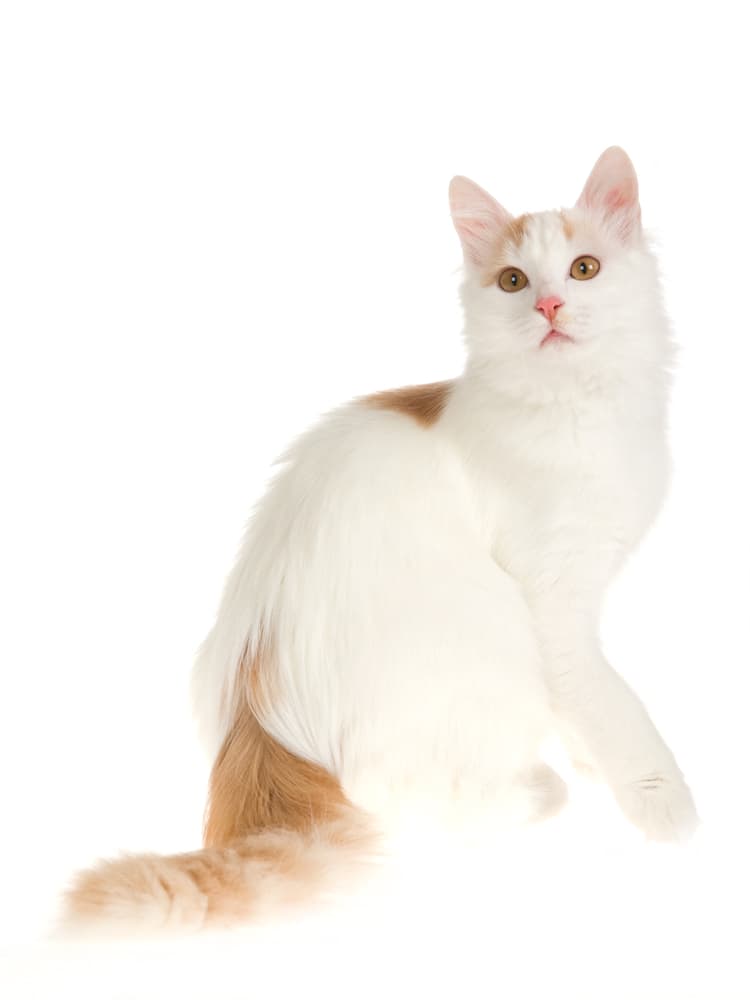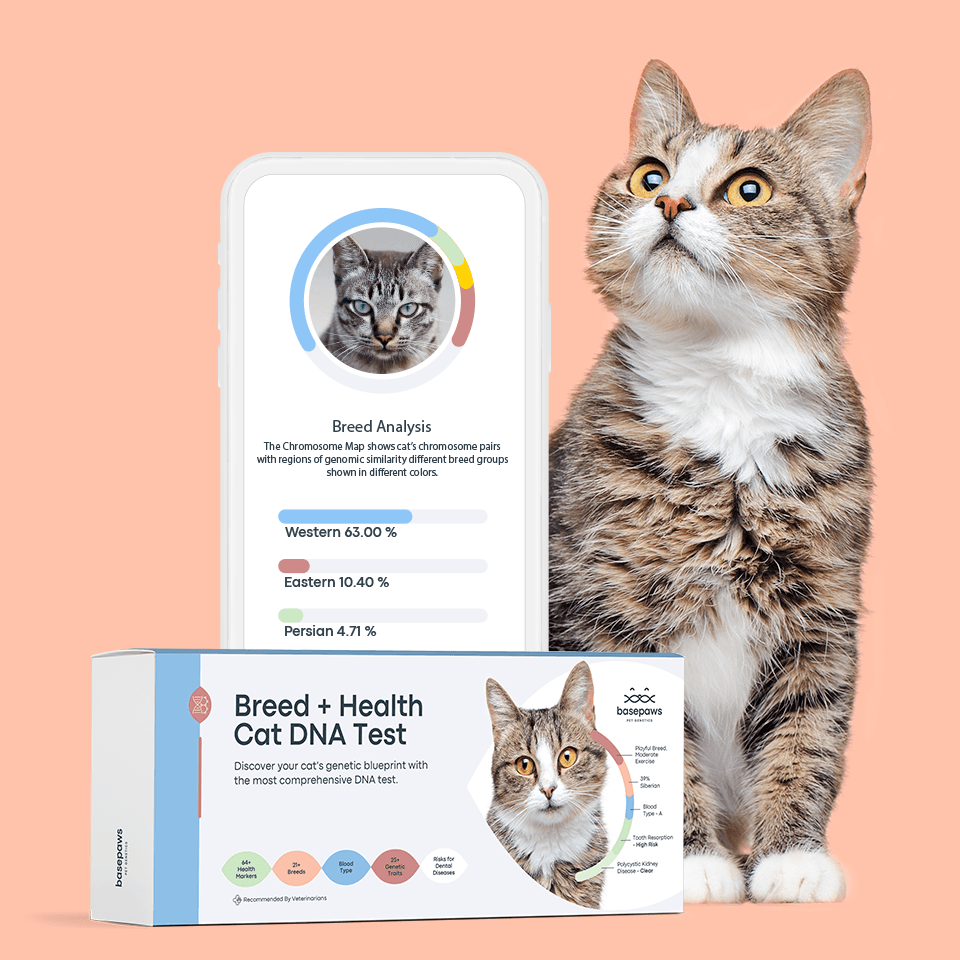Discover your cat's connection to this breed and 20 others


Discover your cat's connection to this breed and 20 others



The Turkish Van is a playful and intelligent breed that is ready to take you on an adventure. With a striking wisp of color topping their head and its tail painted to match, this mostly white cat is one of the rarest in the world. Let us introduce you to the Turkish Van!
The Turkish Van is regarded as one of the most beautiful cats in the world, with their predominantly white body that is kissed with darker markings on their head, tail, and/or back of their shoulders. These fur decorations are known as the “Van Pattern.” These markings can come in many colors and arrangements, including black, blue, and red. Their patterns can be
solid, tortoiseshell, or tabby. The most famous design for the Van is a burst of red or brown on their head and tail. More rare are solid all-white Vans, which are known as “Turkish
Vankedis” or "Van Kedi".
The Van’s body is often compared to a swimmer’s body, as they have large barrel-chests matched with a durable and extended frame. Their tail is lengthy and sturdy, known for its beautiful blossoming fur. They have a stocky neck attached to broad shoulders and can weigh up to 18 pounds (8.16 kg). This is why the Vans are frequently referred to as the ‘jocks’ of the cat world. The Van’s coat is soft to the touch and absent of an undercoat. With semi-long hair that is often compared to cashmere. The Turkish Van has two coat lengths depending on the season; the winter coat is longer and thicker than its shorter and thinner summer coat.
The history of the Turkish Van dates back to between 6,000 B.C. and 3,000 B.C. Considered one of the oldest breeds in the world, ancient artifacts have been found that depict cats that are believed to resemble the Turkish Van. The modern history of the Van can be traced to Sonia Halliday and Laura Lushington. They were two British photographers on assignment in 1955 to capture images of Lake Van, the largest body of water in Turkey. They were gifted two (unrelated) Turkish Vans after they completed their assignment. Each cat had the "Van pattern" that is now famously associated with the breed. The two cats were mated and served as the base-lineage for Turkish Van cats in England. The Turkish Van was officially introduced in the United States in 1982.
Not one for long cuddles, the Turkish Van is all about adventure and action! They want to play and are well known for their dynamic personalities. These cats have strong and deep relationships with their guardians. They insist on getting a lot of attention and plenty of opportunities to play. Often, if they do not get the amount of acknowledgment they want, they will indeed let you know. Vans are an extremely talkative breed and will talk, sing, and yell at you whenever they see fit. Due to the Turkish Van’s activity level and territoriality, they are not recommended for homes with small children. Vans truly like to be up in high places and enjoy looking upon their environment from atop of shelves and refrigerators. Vans are confident and seem to take the position as the defender of the home, and may growl if they are threatened.
Turkish Vans are relatively healthy cats. However, like all cats, there are things to watch out for to help them live their best lives. The Van breed can be prone to obesity if they don't have the space to run around the house or plenty of toys to play with. Daily physical and mental stimulation is a must for this cat. Vans can also develop a heart condition known as Hypertrophic Cardiomyopathy (HMC). HMC is one of the most common heart diseases found in cats. While the Turkish Van is not at a higher risk for deafness as some cat breeds, genetically determined deafness does appear to be closely associated with the white spotting gene and the dominant white gene (excluding the albino white gene. Deafness in white cats is more common among those cats with blue eyes or with heterochromia. This is because the white gene can occasionally cause the degradation of the cochlea (the part of the inner ear involved in hearing) in addition to disrupting melanocyte migration into one or both eyes.
They have a coat that's perfect for swimming. The Van is known as the “Swimming Cat” and they often seek any form of liquid they can find. This means that a Van’s owner must be on high alert when it comes to sinks, toilets, and cups left unattended. They are known to jump in the shower or bath with you as well, and as a highly intelligent breed, they can learn how to turn on faucets and flush toilets.
They are known for the three V's. Turkish Vans are very soft, very vocal, and very active!
Their name is distinguished. The Turkish Van is also known as just ‘The Van.’ Formally known as the ‘Turkish Cat’ upon their initial discovery, people often confused the Turkish Van with the Turkish Angora. The term ‘Van’ was added at the end of the name to differentiate the two cat breeds.
They are believed to have ancient Biblical roots. The Turkish Van is believed first to be introduced in the story of Noah’s Ark; As Noah began to pair animals two by two upon his arc, a pair of what later would be known as Turkish Vans boarded. During the journey, it is said that the two cats jumped into the water and swam towards the closest shore. Once the rain had diminished, the cats began to walk across the land, eventually making a home in Lake Van.
The International Cat Association (TICA) “Introduction to the Turkish Van”
Recommended by top vets with decades of experience
21 breeds
64 genetic health markers
50 genetic trait markers
